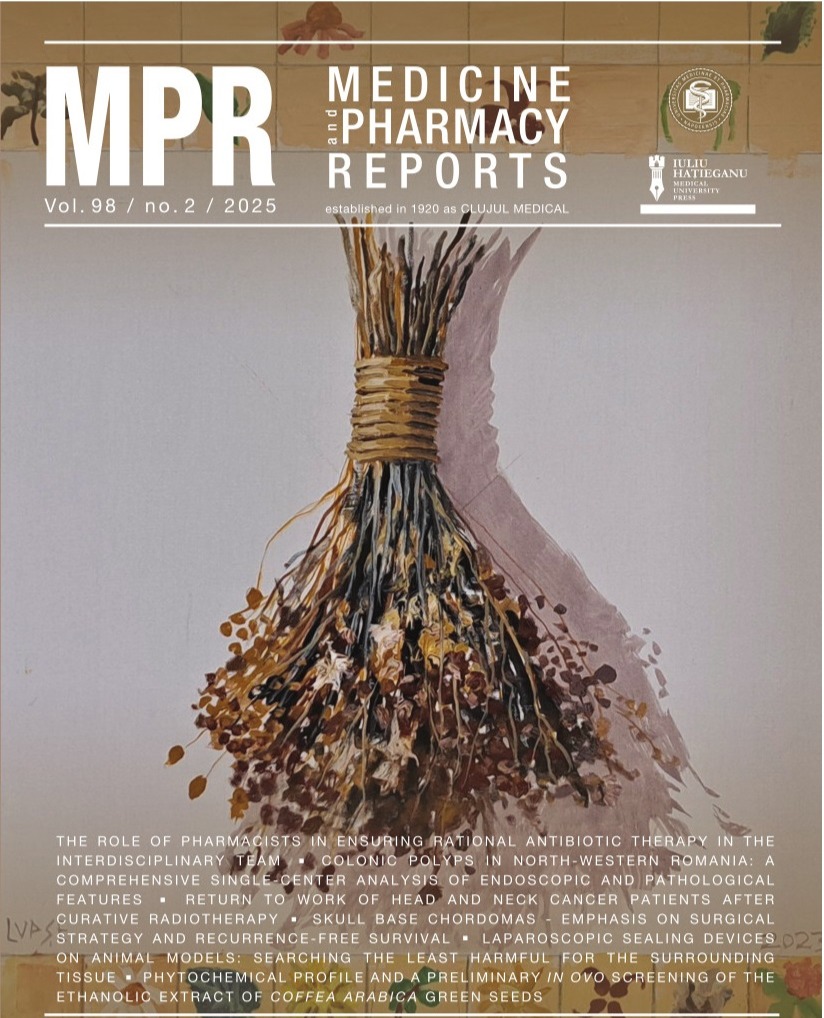Skull base chordomas - emphasis on surgical strategy and recurrence-free survival
DOI:
https://doi.org/10.15386/mpr-2797Keywords:
chordoma, notochord, skull base neoplasms, endoscopic endonasal approachAbstract
Background and aim. Chordomas arise from remnants of the notochord. The aim of this study is to report a series of cases with operated skull base chordomas, with reviewing clinical data, assessing surgical strategy and outcome.
Methods. We performed a 13-year retrospective study, between 2009 and 2022, in which we included patients operated for skull base chordomas. Results. There were 6 males and 9 women, mean age 52.8 ± 16.55 years. Tumor site was clivus (13 patients), left cavernous sinus (one case) and sphenoidal sinus (one case). We performed endoscopic endonasal approach (18 times), transcranial subtemporal approach and combined approach. We achieved GTR in 8 patients, NTR in 4 patients, STR in 7 patients and biopsy in 1 patient. Grade of resection was associated with recurrence incidence (p=0.002). Histological exam revealed conventional chordoma in 14 cases, chondroid chordoma in 5 cases and dedifferentiated (chondrosarcoma) in 1 case. Patients’ neurological status improved following surgery (p=0.000). Five patients underwent adjuvant conventional radiotherapy. Five patients presented local recurrence. All recurrences were reoperated using endoscopic endonasal approach. Survival analysis identified grade of resection and adjuvant radiotherapy as predictive factors for recurrence-free survival.
Conclusions. Surgery is the treatment of choice in skull base chordomas. Surgical approach should be tailored according to tumor original site and extensions. Midline chordomas are proper candidates for endoscopic endonasal approach, while lateral lesions require transcranial surgery. Combined approaches should be used in extensive tumors. GTR and radiotherapy prolong recurrence-free survival. Further studies on larger samples of patients are needed.
Downloads
Published
How to Cite
Issue
Section
License
The authors are required to transfer the copyright of the published paper to the journal. This is done by agreeing to sign the Copyright Assignment Form. Whenever the case, authors are also required to send permissions to reproduce material (such as illustrations) from the copyright holder.

The papers published in the journal are licensed under a Creative Commons Attribution-NonCommercial-NoDerivatives 4.0 International License.

